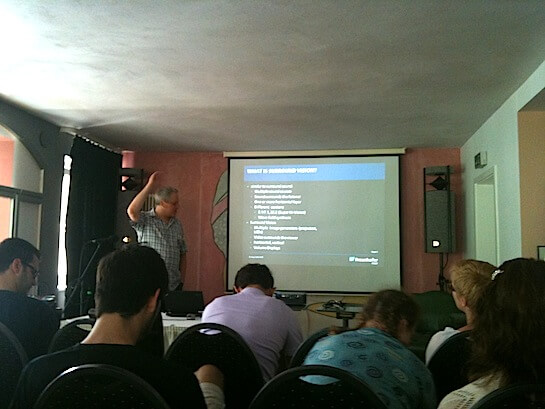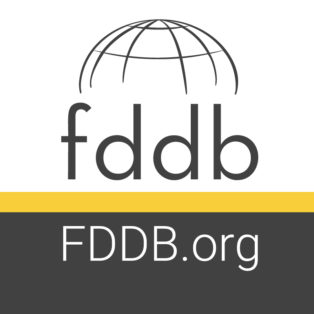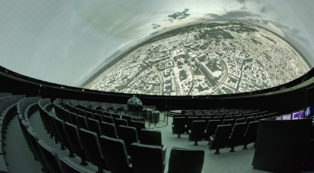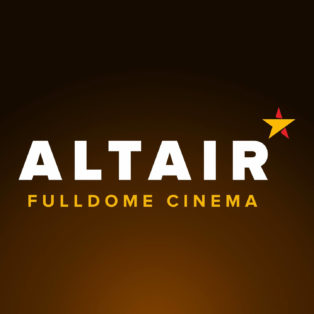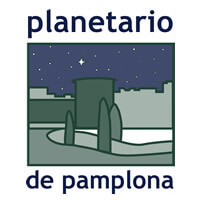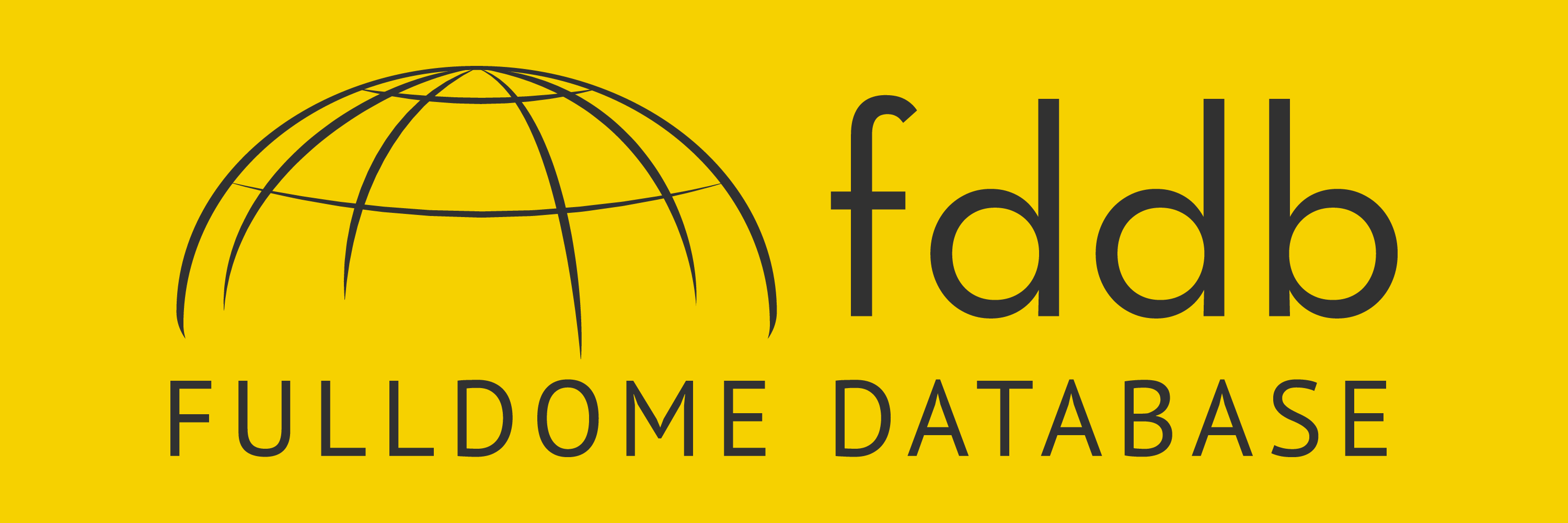2012 FullDome Festival Diary - Day 4
The last two days at the festival offered even more workshops than the days before. The first to take place was "Surround vision: from planetariums to homes - Different aspects of projection and layout", by Ivo Haulsen from the Fraunhofer FIRST Institute in Berlin. Haulsen was invited as a speaker because of his clear explanations of the fulldome and other immersive media. Ivo introduced the audience to the basic concepts of the "surround vision", which comes very similarly to what we know as "surround sound". Many factors do join together to create a good immersive experience, both technological and psychological ones. The more senses are involved, the more you feel part of the virtual world you are immersed in.
No need to say that our sight plays a key role and we got the chance to learn about the human eye: its resolution, dynamic gamma, color space, viewing angle, temporal resolution, how stereoscopic vision works and what movements they are capable of, all things that producers should know in order to create the best immersion ever.

Ivo walked us through the worldwide state-of-the-art immersive installations, such as the hallosphere in Santa Barbara. There are many technologies that allow you to achieve such surround vision: cubed rooms, cave systems, panoramic cylinders, domes, and any other type of mixed forms (i.e. cubed rooms with rounded corners, etc). We all know that technology keeps improving on a daily basis and one day domes will hopefully provide ultra high resolutions, great contrast ratios and brightness. Will Apple introduce a "retina-dome" some time in the future? We surely won't complain about that.
Along with surround vision you would definitely want a surround sound system, which the Fraunhofer Institute has already developed and calls SpatialSound Wave. The technology is based on a 3D virtual space filled with virtual microphones that register how sounds are heard from each point in space. Knowing the particular configuration of the target installation, such data can be rendered out and played by standard sound speakers to create an-almost-real spatial sound environment.
A step further into immersion would come from interaction. This could be either with the presenter during a planetarium lecture, with a selected person or as a massive multiplayer environment where every person is part of the action, which could also lead to group interaction within the public itself.
After a brief review on how live footage shooting can be achieved for the fulldome, Ivo proposed an exciting glimpse into the future, showing how one day we might end up with homes capable of creating immersive multimedia environments. Can't wait for that!

After this overall overview of the immersive media, we kept digging into the fulldome medium with Prof. Klaus Dufke and his review of the 360 Fulldome Laboratory in Postdam.
With a 8 meter dome equipped with a Zeiss system and digital projectors, Prof. Dufke pushes his students to think differently and experience the dome indeed as a laboratory. The lab itself is connected to several departments and the team has been developing a variety of contents and applications, ranging all the way from entertainment to data visualization.
We were shown a few students' projects among which the EurElecTra (European Electicity Transmission) emerged, a tool where you could experience electricity consumption in Europe while moving the cursor on a timeline.
Klaus also reviewed his research on seeking the best device for human interaction with domes and, apparently, the very well known XBox Kinect turned out to be not optimal for such purposes: it's actually good if you can stand close to it, but has many limits when used within a dome to interact with the audience further away.
A 3D mouse was also tried out, but it required a long training period to get used to managing and controlling what's happening in the dome. Using an iPad was a bit better, but the lack of tactile feedback forces you to keep looking down at the device rather than up at the dome.
It turns out the best option was the Nintendo Wii controller, which one could just ignore and look straight at the dome. The team developed a game able to support up to 4 players, who could collect asteroids and planets just by waving around their arms. A little tip for you: if you plan to play with such game, make sure you get some room around you!
After a quick break for a sandwich we were back down in the dome in which a nice inflatable dome was installed and equipped with a digital projector that could be converted from fisheye projection to standard flatscreen within seconds.
The first workshop taking place in the mobile dome was "Interactive Fulldome", by André Wünscher, who is doing his masters degree developing a script to use the Unity 3D game engine for real-time live interaction in a dome environment.

The whole thing is very promising and we saw a live demo where we were actually able to control the camera moving it around in a three dimensional space. Perspective changed correctly throughout the whole presentation and the public enjoyed the whole experience very much.
This piece of software is not finished yet, but we'll certainly hear more from him. Keep up the good work, André!
 We then got deep into the fulldome environment with Jürgen Rienow, PhD student at Kiel's University, who focuses on 3D productions, virtual environments and immersive media.
We then got deep into the fulldome environment with Jürgen Rienow, PhD student at Kiel's University, who focuses on 3D productions, virtual environments and immersive media.
During his talk Jürgen introduced the public to some points of his research, such as where you'd position - in the dome - two people involved in a dialog. To make the whole thing scientific, his team used real people filmed with green screen techniques and then put on the dome with a black background, so that there were no distractions whatsoever.
The set had two cameras, of which they changed their perspective at 20° at the time. At the beginning both guys appeared highly distorted, sort of fatter and with small heads. This made the team decide to till the projection plan, which indeed worked out much better.
They would keep track of a variety of angular distances, both during shooting and while playing them back in the dome. It turned out that placing these folks at the opposite side of the dome doesn't really work as well as they do in other configurations.
Jürgen moved on to discussing architecture visualization, questioning the audience how they would deal with scenes where they're supposed to be looking downwards. A first option would be to place the camera low just above the floor, which he did, but the image looked like if we were very small, which is not the case. You can also use a wider lens, such as a 210° one, but you would end up compressing the whole scene into the usual 180°-hemisphere. A third option would be to actually tilt the camera, so that the floor comes up, which is indeed a very much used technique but isn't that good anyway, as it looks like you're looking from above.
The point is that we should also understand how relative sizes are perceived in the dome, which is everything but an easy task: you can't tell how big something is, unless you have something with which to compare it. This is true in real life as well, but Jürgen gave us a great demonstration of how tangible the whole thing is in domes, too.
Monocular depth perception was also a topic under discussion: as we said, sometime you just lose the perception of how big things are. Camera movements are even more important in the fulldome medium: as soon as you stop them, you just get a 2D image, as the third dimension basically dissolves.
Well, research is still in progress and we'll definitely need to learn more about spatial illusion and spatial perception. It's surely something we need to understand better and Jürgen and his team have a great scientific approach to study the whole thing with.
By now it has become clear that domes can indeed be used for entertainment purposes too, and that's what the next workshop was about: "VJs & the Dome", by the Portuguese new media artist Pedro Zaz, via Brazil from United VJs.
With his disco-like and funny talk, Pedro dragged the audience into his workflow to show them how to create visuals for events that take place into domes, something that he and his colleagues do for living. The good thing is that there isn't much competition between them, they rather collaborate nicely together and get the most out of it.

It was amazing to see how simple the software used was! The first tool you need is Syphon, "an open source Mac OS X technology that allows applications to share frames - full frame rate video or stills - with one another in realtime". The software allows you to "mix, mash, edit, sample, texture-map, synthesize, and present your imagery using the best tool for each part of the job". The great thing is that you can use this video server software to send video output to another software that can then map it on the dome.
Modul8 is actually the software where you'll have your video sources. The last piece of software is Blendydome, the big brother of Blendy (developed by Roger S. at United VJs), which is a self-developed - and yet not available - tool to slice the videos on the fly as well as the edge blending. In case you've got a multiple projector system, it's just matter of knowing the exact position and optics of each projector and you'll be ready to go.
So, thanks to Syphon, the overall workflow would be the following: Modul8 → BlendyDome → Mad Mapper, the very popular software for projection mapping. You're now ready to approaching the VJ world and have fun!
You can also check out VJ Loops, a just-launched website where you can sell and buy short clips and will also find a brand new fulldome category!
Guess we'll see more VJ's clips in the next Festival editions, right?

The day went on with beautiful screenings of students' fulldome shorts as well as other clips produced by independent filmmakers. Each film had a peculiar meaning, narration and style, with great efforts to be original while meeting the festival's main theme: "Dissolving Space".
You know, it's always nice to be immersed in creativity, and Jena's event does just that. Still one day to go, stay tuned!
Have you liked this post? Subscribe to FDDB Newsletter
Sign up now, it's free!
